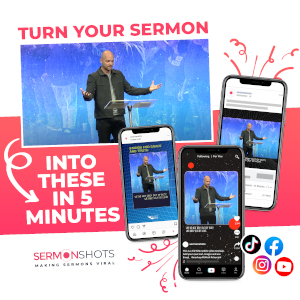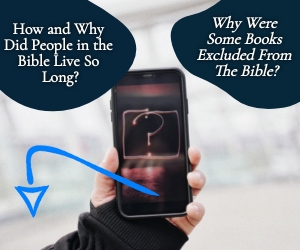I currently live in a very rural area that has thousands and thousands of land used for agriculture. In the early spring it is easy for me to look around and see many miles of soil that is for the most part loose and ready to go. The farmers are just looking for a few days of sunshine to dry things off so they can get out in the field and plant their crops.
You see the soil is so important to their future harvest later on in the year. The farmer does many things typically to fields after harvest to get them ready for the next planting season—they cultivate, fertilize, loosen or plow, study for imbalance, sometimes put field tiles for drainage, rotate crops, and sometimes even give fields time off. Now I am not a farmer and they could give you a much longer list than I just did of things that are important to good soil. But the point is that they need good soil for their crops to grow and prosper.

Now I am not a farmer and they could give you a much longer list than I just did of things that are important to good soil. But the point is that they need good soil for their crops to grow and prosper.
The Bible and Jesus specifically talks in a parable about “Good Soil.” This parable is one of the most popular parables in all of Scripture and it is found in Matthew 13, Mark 4, and Luke 8. This is a parable that many are familiar with even if they are not regular believers. The passage that I want to talk about comes from Luke 8.
There are 3 parts to Jesus Parable and that is how I am going to break it down in a detailed outline of this passage.
1. The Parable is Spoken or told by Jesus (In Luke 8:4-8)
In verses 5-8, Jesus said, that Farmer went out to scatter his seed and it was scattered on 4 places. The four places are easy to visualize for all (even those that are not farmers).
The Path—the result was that it was trampled on, and even the birds ate all of this seed up.
This seed is destroyed before it ever has a chance to grow. The next soil is the rock…
The Rock—the result shown in this soil was that the seed came up but withered because it had no moisture to give it life.
This seed is ultimately unproductive. There appears to be some initial growth but it amounts to nothing. Next was the thorny soil…
The Thorns—the result of this soil was that the seed grew with the thorns and was choked off because of the thorns growing in this soil.
This seed is not purposely mixed with thorns but is again choked out. This seed has greed neighbors, it is in good soil but the thorns minimize any growth. And finally, Jesus talks about good soil…
The Good Soil—the result was a crop 100 times what was sown. This soil is ready to go and ready to produce a great crop (farmers call it a ‘bumper crop’).
This seed overcomes any obstacles in the soil and grows to bear more seed
So Jesus tells this parable and then (in verse 8), Jesus calls out and says, “He who has ears to hear, let him hear.”
What is Jesus saying here???? The crowd at this point is looking around at each other and thinking things like, “this guy isn’t even a farmer—and even if he was, why is he talking about agriculture and soil types.” Remember the text here says that this is a large crowd that was gathering to hear him. These words of Jesus were being told like a story that you might hear from a family member but when the story seems ready for a conclusion or some finality, Jesus seems to confuse everyone (including his own disciples). In fact, the next thing that we see is the disciples pull Jesus aside and ask Him what He was talking about. And that takes us to the second part of this parable that I want to discuss. In the next 2 verses Jesus tells us why He sometimes uses parables (in Luke 8:9-10).
2. Jesus tells Why He even tells Parables (Luke 8:9-10)
It may be helpful to talk about what a parable is and what it is not. A Seminary professor of mine described it to me this way—it is an down here teaching (or a teaching on the planet earth) about a spiritual principle. So it is a story that we can relate to but that teaches us about becoming more like Christ. But why does Jesus use them you ask? Well Jesus tells us in verses 9-10. One interesting thing about this passage is to look at Jesus’ disciples. The disciples are curious about what Jesus was trying to say and the other followers that were there really don’t seem to have a clue. The disciples know Jesus well enough to know that He isn’t teaching about agriculture principles.
In verses 9-10, Jesus explains that the Word of God divides people into 2 groups. There are those that hear the Word of God and ultimately obey and do what it says. But the second group is people that have hard hearts and reject God’s Word and His offer of Salvation. At this point the disciples were beginning to figure out and understand the teaching of this parable. The last part that I want to talk about occurs in Luke 8:11-15 when Jesus brings the teaching down to a level that all should understand.
3. Jesus Explains the Parable so we all can learn (Luke 8:11-15).
Now often when someone teaches or preaches about a parable they try to figure out, “whose in”, and “whose out.” Or in other words they try to figure out which of the 4 soils are Christians and which are unbelievers. Now the first soil is clearly a picture of the unsaved—no doubt there. I think we all could agree on that. And the last soil is clearly a picture of the saved person. However, the other 2 soils are unclear and probably they are intentionally unclear. What I mean is that I don’t think Jesus taught this with the intention of having us try to figure out who is in and who is out.
Jesus main point with this whole parable is that only the 4th soil ever achieves the goal of being productive and blessed. That is the point of the parable. The other three soils did not have a successful experience. They were not the ideal to strive for.
So what I am trying to say is that I don’t think it is important for you to read this parable and try to figure out which soil you are. But rather to ask yourself “what single type of response to the word of God have I given?”
Now I acknowledge that there are many interpretations and explanations about this parable. And that very few of these interpretations agree. Here is my explanation of the parable in some short sentences. The seed = the word of God. That seems to be clear by looking at Jesus’ words. Those on the path = the seed stolen by the devil. The seed on the rock = any seed without root cannot ultimately survive. The seed on the thorns = those who hear but worry and it seems that things like riches and pleasures get in the way of accepting the seed.
The Good Soil shows 3 characteristics that are seen in Luke 8. First, there is an honest and good heart or a moral quality and integrity that makes righteous responses. Secondly, the good soil holds fast to the seed that was spread. And finally, the good soil has patience knowing that the good seed will produce a crop.
I know that this article might give many comments and opinions, which I welcome. I think it is important every time we look at a parable to remember that Jesus told these stories to usually make one single point. Andy Stanley speaks about this often and says that we make a great mistake when we try to tie up each loose end of a parable. That is not what Jesus had in mind when using these parables. This parable is convicting to me every time I read or study it and my prayer today is that it is for you too.
Blessings,
Pastor Daryl
Check out this related article: 5 Parables of Jesus To Learn From








 Welcome to What Christians Want To Know! The mission of this site is to equip, encourage, and energize Christians. Look for regular updates including Bible Verses, Bible Stories, Christian Quotes, Christian Answers, and much more. Find out
Welcome to What Christians Want To Know! The mission of this site is to equip, encourage, and energize Christians. Look for regular updates including Bible Verses, Bible Stories, Christian Quotes, Christian Answers, and much more. Find out 









